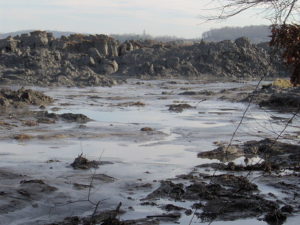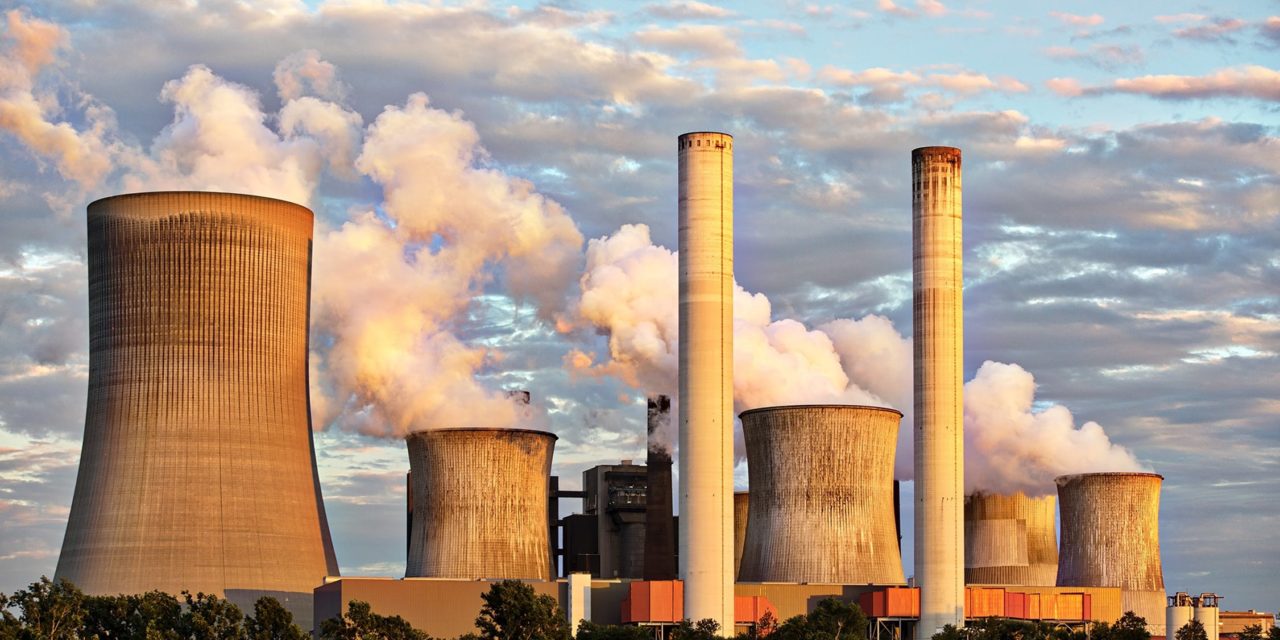Every year more than 800 million tons of coal are used in power plants across the United States. However, not all of that is used to create energy. Coal ash, a generic term for the leftover byproducts of coal combustion, remains behind to be cleaned up and disposed of either on- or off-site. Some coal ash is sold and used to make wallboard, concrete, and bricks, which is known as “beneficial use.”
More than 100 million tons of coal ash are produced every year. It often contains several hazardous substances, including mercury, lead, and arsenic, requiring companies to dispose of the coal ash in a way that won’t have it leak into the water table.

A 25-foot-high wall of ash from the TVA Kingston Fossil Plant fly ash spill, courtesy of Brian Stansberry, CC BY 3.0.
However, a coal ash spill last year in North Carolina spurred the U.S. Environmental Protection Agency (EPA) to finalize rules for safely disposing of coal ash. The spill in North Carolina is the second major coal ash spill, following a 2008 spill in Tennessee that initially caused EPA to assess the disposal of coal ash. You can read more about our involvement in the class action litigation regarding the Tennessee event.
On December 19, 2014, EPA finalized their rule for disposal of coal combustion residuals (CCRs) from electric utilities. The rule establishes requirements for CCR landfills and surface impoundments under Subtitle D of the Resource Conservation and Recovery Act (RCRA), which is the nation’s primary law for regulating solid waste. EPA had initially considered regulating CCRs under Subtitle C of RCRA, which governs hazardous wastes. However, after examining the evidence and considering submitted comments, the agency decided to regulate this waste stream as solid waste rather than hazardous waste.
The CCR rule is meant to ensure that coal ash is safely stored by establishing requirements for coal ash landfills or wet storage. In wet storage, coal ash is mixed with water to keep the ash from blowing away. The ash is then kept in a large pond. Ponds failed in both North Carolina and Tennessee, sending millions of cubic yards of hazardous coal ash into nearby rivers.
These are some of the requirements in the new rule:
- Ponds will be inspected on a weekly basis and monitored for groundwater contamination that exceeds groundwater protection standards. Leaking ponds will be required to retrofit or close.
- New ponds and landfills must not be located near sensitive areas, such as wetlands, fault lines, and the uppermost aquifer.
- New ponds and landfills must be lined to prevent seepage into the local water table.
- New sites will have engineering requirements to protect local rivers and groundwater. Companies will have to periodically test sites for structural integrity.
- Companies will have to provide more information to the public about the waste sites.
Sites that do not comply could be shut down.
Inactive sites (sites no longer receiving waste) are not covered by the new rule as long as they are properly closed (dewatered and covered) within 3 years of the publication of this rule.
The rule also does not cover “beneficial use” of coal ash, such as recycling the ash to be used in concrete. State environmental agencies will continue to regulate beneficial use of coal ash.
We’ll have more on the ruling in the coming months as it is implemented (ranging from 6 months to over 3 years after publication in the Federal Register). What are your thoughts? Does the CCR rule go far enough to protect private property and groundwater and surface water from potential coal ash contamination, or does it need more teeth?






Recent Comments